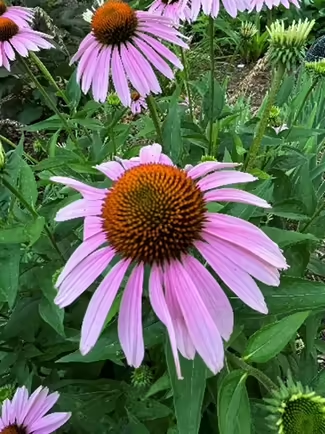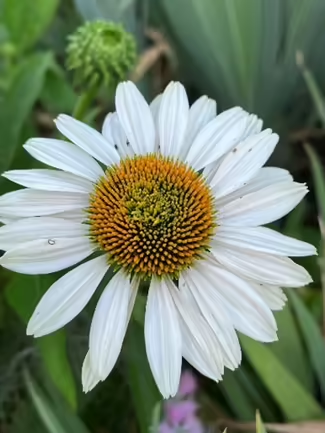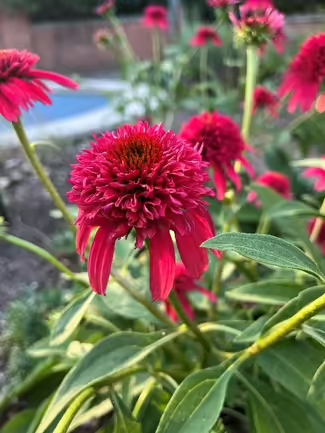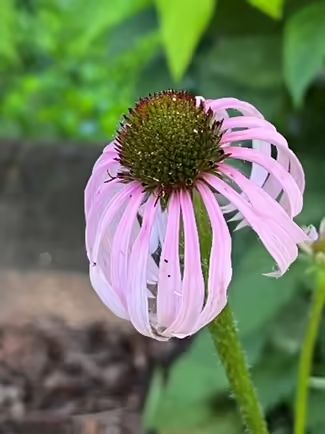
Coneflowers (Echinacea spp.) make a beautiful addition to any garden and are relatively easy to establish and grow. Even better, most coneflowers are excellent pollinator plants as well as providers of food for goldfinches and other seed-eating birds after the blooms have faded.
Early June usually marks the beginning of coneflower bloom for my St Louis metro east garden, and I try to take full advantage of the numerous U.S. native species and nativars suited to my growing conditions. The genus Echinacea is native only to North America and of the nine species, three are native to parts of Illinois: the purple coneflower (E. purpurea), the pale purple coneflower (E. pallida), and the wavyleaf purple coneflower (E. simulata). Several other species, including the narrowleaf coneflower (E. angustifolia) and the yellow coneflower (E. paradoxa) are also well adapted.
In general, I have had very good luck with establishment and longevity with the straight species, but less so with named cultivars/nativars. I blame myself. Like many gardeners, I initially bought some cultivars solely based on the “WOW” factor but became less so inclined after several selections failed to make it through even the first winter. I’ve wised up and now stick to those cultivars that have passed the test of time in multi-year variety trials like those conducted and reported on from the Mt Cuba Center and the The Ohio State University. A good example is ‘Fragrant Angel,’ a white-flowered purple coneflower. It does in fact live up to its name in terms of a sweet fragrance, but it also comes back reliably year after year and is highly attractive to pollinators. Double-flowered coneflowers are not only showier, but the bloom also tends to last longer. On the downside, they have proved to be less favored by pollinators. Why is that? Simply put, the mutation that results in more petals is at the expense of functional flower parts that produce pollen, nectar and seeds…the main draw of pollinators.
There are a lot of yellow coneflower-type perennials to choose from in genera like Ratibida, Rudbeckia, Silphium and Helianthus, but unexpectedly Echinacea has one too. The yellow coneflower is the only straight species in the genus Echinacea to have yellow flowers, and maybe that is why its discoverer gave it its species name? All the rest produce pinkish purple petals. The yellow coneflower is very much like the purple coneflower, though it tends to top out around three feet, whereas the purple coneflower can reach upwards of five feet on the right sight. And unlike the other yellow coneflower-type genera, the yellow coneflower has been much more polite in my garden in terms of spread, so I have not developed a love-hate relationship with it like I have the other genera.
Where the purple and yellow coneflower are very upright and erect, the wavyleaf and pale purple coneflowers tend to dance with the wind on two-to-three-foot wiry stems, giving both a very airy and delicate feel. But unless you examine the pollen of each, the pale purple and wavyleaf coneflowers are challenging to differentiate one from the other. Both have drooping, pale pinkish purple ray flower (petals); with the pale purple cone flower having white pollen, and the wavyleaf coneflower having yellow pollen.





